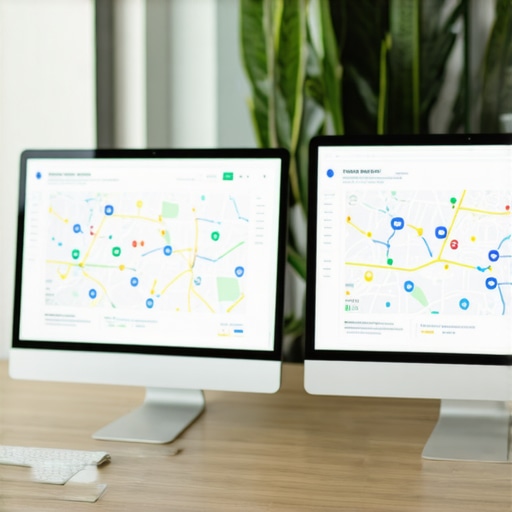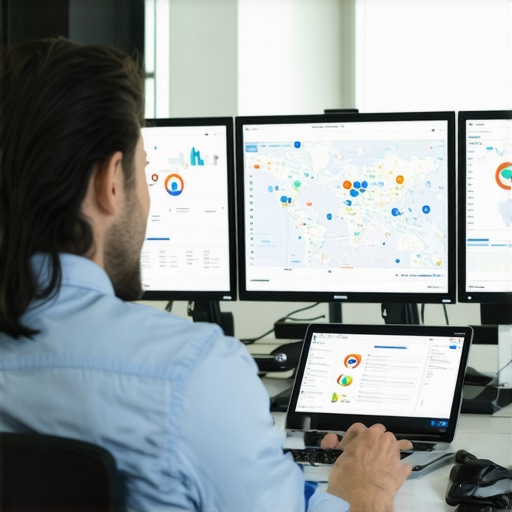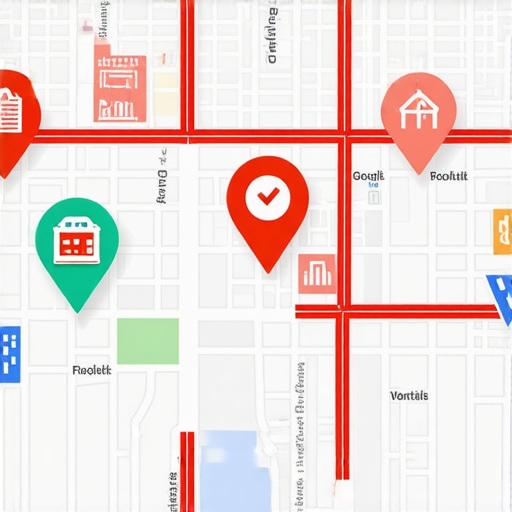Fast GMB Ranking Tips to Boost Google Maps 3 Pack in 2025
November 2, 2025My Journey to Google Maps Domination: A Personal Story
Hey there! I remember when I first started trying to get my local business noticed on Google Maps. It was a mix of frustration and curiosity, but I was determined to crack the code. Over time, I learned some effective Fast GMB Ranking Tips that really moved the needle, especially as the local SEO landscape evolved heading into 2025.
Unlocking the Power of Local SEO for Google Maps Success
One thing I realized early on is that simple local SEO strategies can significantly improve your chances of ranking in the coveted Google Maps 3 Pack. Techniques like optimizing your GMB profile, gathering genuine reviews, and maintaining consistent NAP citations became my main focus.
How Do I Stay Ahead in Google Maps Rankings?
Staying ahead requires a combination of technical optimization and active engagement. I started by optimizing my GMB profile, ensuring all information was accurate, complete, and keyword-rich. Regularly posting updates and responding to reviews created a strong signal to Google that my listing was active and trustworthy.
What Are the Key Factors That Accelerate Local Rankings?
Great question! From my experience, factors like consistent reviews, local backlinks, and optimized categories play a vital role. The click-through rate (CTR) is also a crucial element. Improving your GMB listing’s visibility directly boosts your chances of appearing in the 3 Pack quickly.
For more detailed tactics, I recommend exploring the comprehensive blueprint for dominating Google Maps in 2025.
If you’re serious about climbing the ranks fast, consider leveraging proven promotion techniques, such as local citations and Google My Business posting strategies, which have shown excellent results for many local businesses.
Remember, consistent effort and staying updated with the latest SEO trends are key. I invite you to share your experiences or ask questions in the comments below — let’s grow together!
Mastering the Art of Local Search with Advanced Google Maps Techniques
Building on foundational SEO tactics, seasoned local marketers now turn to sophisticated strategies to outpace competitors in Google Maps rankings. These include leveraging hyper-local content, implementing structured data markup for local businesses, and utilizing proven promotion techniques such as targeted local backlinks and citation building. Embracing these tactics ensures your business not only ranks higher but also sustains visibility in an increasingly competitive landscape.
The Role of Google Maps API and Location Data Optimization
Beyond traditional SEO, integrating Google Maps API into your website enhances user engagement and provides Google with additional signals about your business location. Optimizing your location data—including precise address formatting, service areas, and geo-specific keywords—can significantly impact your local pack rankings. Remember, consistent NAP data across all online platforms remains critical to build trust and authority with Google.
How Can Emerging Technologies Like AI and Machine Learning Influence Your Local SEO Strategy?
Emerging technologies are reshaping how local SEO is approached. AI-driven tools now analyze competitor strategies, optimize keyword targeting, and personalize user engagement to enhance GMB profile performance. For instance, AI can help craft compelling review responses or suggest content ideas that resonate with local audiences—further boosting your visibility. Staying updated on these innovations through authoritative sources such as local SEO maps strategies for 2025 is essential for maintaining a competitive edge.

To truly excel, consider exploring comprehensive blueprints designed for Google Maps success in 2025. These resources delve into the nuanced tactics and technical SEO adjustments needed to dominate your local market.
Don’t forget, consistent review management and engaging with your community through updates and Q&A can reinforce your local authority. Share your insights or ask questions in the comments—your journey to Google Maps mastery can inspire others!
Reflections on the Complexity of Local SEO: Beyond the Basics
Over the years, I’ve come to appreciate just how intricate the game of local SEO on Google Maps truly is. What initially seemed straightforward—optimizing profiles, gathering reviews—has evolved into a nuanced craft that demands constant adaptation. Each update from Google introduces new variables, making it essential to stay engaged and curious about emerging tactics. I remember spending countless late nights analyzing competitors’ profiles, trying to decipher their secret sauce, which often led me to discover overlooked opportunities like hyper-local content and structured data markup that significantly boosted my rankings.
Personal Insights Into Advanced Optimization Techniques
One lesson I hold close is the importance of personalized engagement. Responding to reviews thoughtfully, sharing behind-the-scenes stories through GMB posts, and actively participating in community Q&A sessions creates a genuine connection with both customers and Google. These actions, though seemingly small, compound over time and build a robust local authority. I also learned that integrating the Google Maps API into my website not only enhanced user experience but also provided Google with valuable signals about my business location and services. This integration became a game-changer, especially when combined with meticulous NAP consistency across all platforms.
How Do Emerging Technologies Reshape the Strategy?
Delving into the realm of AI and machine learning, I’ve observed how these tools have transformed local SEO. AI-driven competitor analysis and keyword optimization allow for a more targeted approach, giving businesses an edge in crowded markets. For example, AI can craft personalized review responses that resonate with local audiences, fostering trust and loyalty. Staying updated through authoritative sources like local SEO maps strategies for 2025 helps me adapt my tactics proactively, rather than reactively.
One of my most valuable lessons has been recognizing the importance of a holistic strategy—combining technical optimization, genuine community engagement, and technological innovation. It’s this synergy that truly elevates a business’s presence on Google Maps. I encourage you to explore comprehensive blueprints and case studies, which have often revealed subtle yet impactful adjustments that can accelerate your rankings. For anyone serious about mastering local SEO, I recommend checking out the detailed blueprint for dominating Google Maps in 2025 to refine your approach.
Sharing Your Journey and Connecting with Fellow Marketers
Ultimately, my journey has been about continuous learning and community. I’ve found that sharing experiences, asking questions, and exchanging insights with others in the field not only accelerates growth but also keeps the passion alive. I invite you to share your own stories or ask questions—your experiences could inspire others navigating similar challenges. Together, leveraging advanced strategies and authentic engagement, we can unlock the full potential of Google Maps and dominate our local markets.
Harnessing Hyper-Local Content and Structured Data for Unmatched Visibility
Building upon foundational tactics, advanced local SEO practitioners now leverage hyper-local content to resonate more deeply with the immediate community. This approach involves creating blog posts, videos, and testimonials that highlight neighborhood events, local partnerships, and community stories, which Google perceives as signals of genuine local relevance. Additionally, implementing structured data markup for local businesses enhances search engine understanding of your business details, helping your listing stand out more prominently in the local pack.
Optimizing Location Data with Precision and Consistency
One often overlooked aspect is the meticulous management of your location data. Ensuring your NAP (Name, Address, Phone Number) is consistent across all online platforms, including your website, social media, and citation directories, is crucial. Using geo-specific keywords in your descriptions and service areas further signals relevance to Google’s local algorithms. Additionally, integrating Google Maps API into your website not only improves user experience but also provides Google with authoritative signals about your precise location and service zones. This dual approach of data accuracy and technical integration is essential for sustained local visibility.
What Role Do Emerging AI Technologies Play in Elevating Local SEO?
Emerging AI tools are revolutionizing how we approach local SEO. These technologies analyze competitors’ strategies, identify content gaps, and optimize keyword targeting with unprecedented precision. For example, AI can generate personalized review responses that foster community trust or suggest localized content ideas based on trending topics in your area. According to a recent report by local SEO maps strategies for 2025, leveraging AI-driven insights enables businesses to stay ahead of algorithm updates and consumer behavior shifts, ensuring long-term dominance in local searches.

Integrating these advanced techniques requires a strategic mindset and continuous adaptation. For those eager to dive deeper, exploring comprehensive blueprints such as the ultimate blueprint for dominating Google Maps in 2025 can provide a structured pathway to success. Remember, combining technological innovation with authentic community engagement creates an unbeatable synergy that propels your local presence to new heights.
The Power of Community Engagement and Authentic Reviews
Beyond technical mastery, fostering genuine relationships within your community significantly amplifies your local authority. Encouraging satisfied customers to leave detailed reviews and actively responding to each review not only boosts your reputation but also signals active engagement to Google. Sharing behind-the-scenes stories and participating in local Q&A sessions further humanizes your brand, fostering trust and loyalty. I’ve personally witnessed how these authentic interactions, when paired with technical SEO strategies, can accelerate rankings and build a resilient local brand.
How Can You Sustain an Edge in the Competitive Local Landscape?
Maintaining a competitive edge requires a balanced approach of consistency, innovation, and community focus. Regularly updating your GMB profile, analyzing competitors’ strategies, and staying informed through authoritative sources are vital. For instance, utilizing GMB CTR optimization tips can significantly enhance your visibility. Additionally, exploring specialized SEO packages or consulting with local SEO experts, such as through professional services, can provide tailored strategies that align with your unique market dynamics.
Engagement extends beyond just rankings; it’s about creating a sustainable presence that adapts to evolving consumer behaviors and algorithm changes. I invite you to share your experiences or ask questions—your insights not only enrich your journey but also inspire others striving for local dominance.
Things I Wish I Knew Earlier (or You Might Find Surprising)
The Power of Consistency
One of the biggest lessons I learned the hard way is that consistency in your NAP (Name, Address, Phone Number) across all platforms is the backbone of local SEO success. I used to overlook small discrepancies, but I found that even minor inconsistencies could hurt my rankings more than I expected. Now, I double-check every citation and listing to ensure perfect uniformity, which has made a noticeable difference in my Google Maps visibility.
Genuine Reviews Matter More Than You Think
Initially, I thought accumulating reviews was just about quantity, but I soon realized that the quality and authenticity of reviews play a critical role. Fake reviews or overly curated feedback can actually harm your credibility. Encouraging real customers to share their honest experiences and responding thoughtfully fosters trust and signals to Google that your business is active and reputable.
Hyper-Local Content Is a Game Changer
Creating hyper-local content, such as neighborhood spotlights or community event coverage, drastically improved my local relevance. Google recognizes these signals as genuine local engagement, which helps boost your rankings in the 3 Pack. I started sharing stories about my community and local partnerships, and the engagement from these efforts was incredible.
Technical Optimization Can Be Overlooked
Optimizing your website with structured data markup and precise location data often gets neglected. Implementing schema markup for local businesses and ensuring your website’s geo-specific keywords align with your Google My Business profile can give you an edge. I learned that technical details, when done right, support your overall strategy and accelerate your ranking progress.
Emerging Tech Is a Secret Weapon
AI and machine learning tools have opened new horizons in local SEO. From analyzing competitors to crafting review responses, these technologies help tailor your strategies more precisely. I started experimenting with AI-driven insights, and it helped me stay ahead of Google’s algorithm updates while refining my content and engagement tactics.
Community Engagement Amplifies Your Reach
Engaging authentically with your local community through Q&A, updates, and responding to reviews builds a loyal customer base and signals activity to Google. Genuine interactions have a compounding effect on your local authority, making your business a trusted part of the neighborhood.
Resources I’ve Come to Trust Over Time
- Google’s Official My Business Help Center: A reliable source for platform updates and best practices. It’s where I learned about the importance of accurate NAP data and review management.
- Moz Local SEO Resources: Their guides on local SEO strategies helped me understand the bigger picture and refine my tactics.
- BrightLocal Blog: Regularly updated with case studies and tips, it’s a goldmine for actionable insights and emerging trends.
- Google Maps API Documentation: For technical integration, understanding the API’s capabilities allowed me to enhance user experience and signal relevance to Google.
Parting Thoughts from My Perspective
Looking back, mastering Google Maps SEO was not just about quick wins but about building a sustainable, authentic presence. The key is to combine consistent, genuine community engagement with technical precision and leverage emerging technologies like AI to stay ahead. If you’re serious about climbing the ranks, I recommend exploring the blueprint for dominating Google Maps in 2025. Remember, it’s a journey that requires patience, adaptability, and a genuine connection to your community. If this resonated with you, I’d love to hear your thoughts—drop a comment or share your own experiences. Let’s grow together and unlock the full potential of local SEO.
